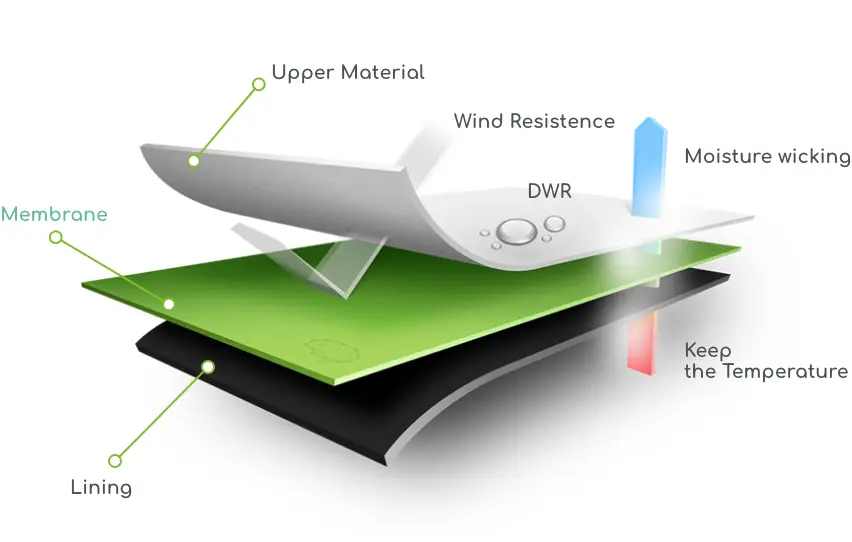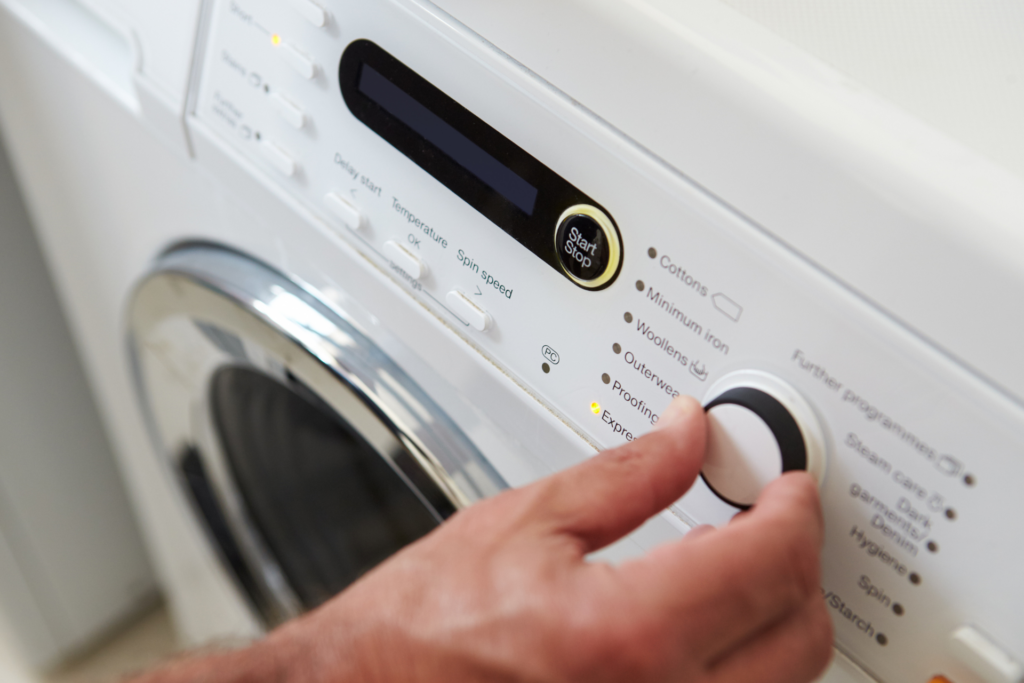A science called membrane clothing
All of us, whether we're avid hikers, athletes or just the occasional outdoorsman, have gone hiking or played sports at some point. Unless it's a sweltering summer, we need to dress in a way that keeps us warm but comfortable at the same time. After all, no one wants a pleasant walk or sporting activity to become an ordeal. Temperatures fluctuate throughout the day - it can be cold in the morning, then we warm up and put our outerwear away, and when we sit down for a snack, sweaty, it's important not to get cold. This is where the right outdoor clothing can help. But how do you choose the right one? There are so many types and brands on the market today that if you're not an outdoor enthusiast, it can be hard to find your way around. So let's go over some basic rules that can help us when buying.
How membrane clothing works

A membrane is a thin, vapour permeable and waterproof layer (film) that is bonded to fabric in a special way. You can't see the membrane in the finished jacket because it is usually covered by the lining.
This 'sandwich' consists of the outer fabric, the membrane and the lining. When the membrane is glued to the fabric, it becomes a 'textile laminate' that wicks away sweat but does not let in water or wind. So when we make a jacket out of a fabric with a membrane, it protects us from wind and rain, but at the same time we won't sweat like a raincoat during strenuous physical activity.
Wearing membrane jackets requires a bit of common sense and we should not rely on them as a magic solution for all situations. For a jacket to work properly and provide us with maximum comfort, it is crucial to dress properly underneath and choose the appropriate clothing for each layer:
- First layer - thermal underwear - thin clothing that retains heat and wicks away moisture easily. If you put on a cotton T-shirt that doesn't wick moisture, the vapour would turn to water in the cold and the membrane would no longer help: the moisture would stay on your body.
- The second layer - the insulation - is there to keep the heat in. It can be a fleece or wool sweatshirt, but always with a touch of synthetics to wick away moisture.
- The third layer - the membrane jacket - is the final layer that completes the overall effect. It lets out steam and doesn't let water or wind get to your body. This makes you feel very comfortable and minimises the risk of catching a cold.
The difference between shoftshell and hardshell
Softshell is a combination of a second and third layer in one material. It protects us from light rain or snow and is ideal for light loads or urban walks.
Hardshell is a tough, mostly inflexible jacket that forms a hard "shell" and protects you in harsher weather conditions.
How to choose a membrane jacket

Before you start choosing, it's important to be clear about what you'll be using the jacket for. You should ask yourself the following questions:
- Will I wear it mainly in the city or in the countryside?
- What kind of physical activity am I planning?
- What temperature conditions will I be in?
And how do I make sense of all the numbers and terms on the jacket label in the store? These data indicate the technical characteristics of the jacket. The two most important things to focus on:
Water column
The water column value in mm indicates how waterproof the jacket is, i.e. how much water it can hold before it starts to leak. The purchase price of a jacket increases proportionally with the water column, so it's a good idea to think in advance about where you'll wear it
For the city, a jacket with a water column of up to 2,000 mm will do. If you're planning short walks in the rain or are a recreational skier, choose a jacket with a water column of 10,000 mm. For perfect protection against rain during outdoor activities, it is advisable to choose materials with a water column of 20,000 mm.
Vapour permeability - breathability
Breathability works on the basis of vapour permeability thanks to the waterproof (microporous) membrane. This membrane has microscopic pores that allow sweat to pass through but prevent the penetration of water molecules that are larger than the membrane pores. Breathability is measured by the amount of evaporated water that can pass through an area of 1 m2 of fabric in 24 hours.
For urban models, a value of up to 10,000 g/m2/24 h is sufficient to provide limited functional breathability. However, if you are planning more physically demanding activities and really want to feel the moisture wicking effect, look for values between 15,000 and 20,000 g/m2/24 h. Above 20,000 g/m2/24 h we get into the performance range.
Seam protection
To make your clothes truly rainproof, a membrane alone is not enough - you also need seam protection. When choosing a jacket, therefore, pay attention to this information: the seams are either partially taped (only the main ones) or fully taped. For everyday use, taping the main seams is sufficient.
These features are abbreviated as Partial Seam Taping (PTS) and Full Seam Taping (FTS).
It doesn't end with the purchase - proper care of the jacket is key
Improper care can lead to the deterioration of a jacket's unique properties, and it may stop working after a few washes. It is therefore important to follow the following recommendations:
- Wash on a gentle cycle at 30°C.
- Set the wringing speed to a maximum of 800 rpm.
- Wash ideally 1-2 times a year.
- Use special detergents designed for membrane garments. We recommend products from Nikwax, Toko, Perwoll Sport and Granger's.
- Do not use fabric softener.
- Iron the jacket after each wash to activate particles that repel water, oil and other contaminants.
- Wash down jackets with a membrane with a detergent designed for down.
- Wash double-layer laminates separately.
- Care of membrane garments
- With these simple steps, your jacket will retain its great qualities and serve you for many years.

Innovative textile lamination for modern use
At SVITAP company we push the boundaries of traditional textiles with our unique combination with membranes. The result is a material that is characterised by unique properties. It finds a wide range of applications - for example, it is used to make clothing and sleeping bags for outdoor enthusiasts or products that are appreciated by allergy sufferers.
Want to know more?
Visit our website: www.textilni-laminace.cz/en/
